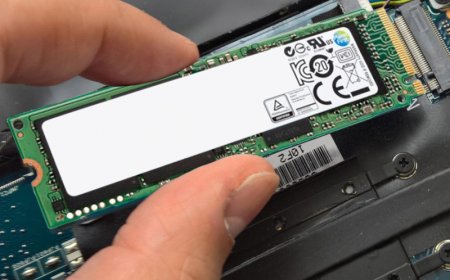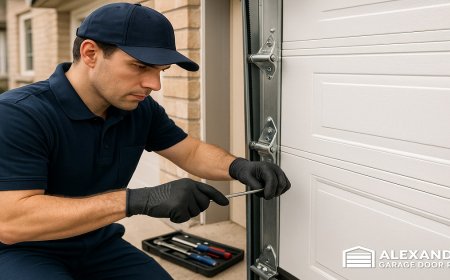How to Connect Your Cold Wallet to MetaMask and Other dApps
This article explains how to securely connect a top cold wallet to MetaMask and other decentralized applications in 2025. It provides a step-by-step guide for integrating popular hardware wallets like Ledger, Trezor, and Keystone with MetaMask, enabling safe interaction with DeFi platforms, NFTs, and Web3 tools. Readers will also learn best practices for protecting their private keys while enjoying the flexibility of dApps. Whether you're using Ledger or looking for the best cold wallet, this guide helps you bridge security and functionality with ease.

As decentralized finance (DeFi) and Web3 applications continue to expand in 2025, many crypto investors are looking for ways to interact with decentralized apps (dApps) without compromising security. A growing number of users are now pairing their cold wallets with hot wallet interfaces like MetaMask to safely access DeFi platforms, NFT marketplaces, and blockchain gameswithout exposing their private keys.
If youre wondering how to connect a top cold wallet to MetaMask or other dApps, this guide will walk you through the process step-by-step. You'll learn how to maintain maximum security while enjoying the full benefits of the decentralized ecosystem. Plus, well share tips for choosing the best cold wallet for secure dApp access.
Why Connect a Cold Wallet to MetaMask?
Cold wallets are designed for secure offline storage, while MetaMask is a hot wallet that connects to Ethereum and other EVM-compatible networks through a browser extension or mobile app. By linking your cold wallet to MetaMask, you can:
-
Safely sign transactions using hardware-level protection
-
Access DeFi platforms like Uniswap, Aave, Compound, and more
-
Mint and manage NFTs securely
-
Participate in DAO governance without risking your private keys
This hybrid setup allows you to use your cold wallet as a vault while leveraging MetaMasks interface as a gateway to the decentralized world.
Supported Cold Wallets for MetaMask Integration
Several of the top cold wallets are compatible with MetaMask, including:
-
Ledger Nano S / X / Nano X Plus
-
Trezor One / Trezor Model T
-
Keystone Pro (via QR code support)
-
AirGap Wallet (via WalletConnect)
-
GridPlus Lattice1
When paired correctly, these wallets enable offline signing of transactions initiated through MetaMask, keeping your private keys safe from internet exposure.
Step-by-Step: Connecting Ledger or Trezor to MetaMask
Step 1: Set Up Your Cold Wallet
Before anything else, ensure that your cold wallet is properly set up and initialized with a secure PIN and recovery phrase. Make sure the firmware is updated to the latest version.
Step 2: Install MetaMask
If you havent already, download and install the MetaMask browser extension or mobile app. Set up a wallet (or import one if you already have it).
Tip: This MetaMask wallet is just an interfaceyoull be importing your cold wallet later.
Step 3: Connect Your Hardware Wallet
On your MetaMask dashboard:
-
Click on the account icon (top-right corner).
-
Select Connect Hardware Wallet.
-
Choose Ledger or Trezor (depending on your device).
-
Plug in your wallet and unlock it.
-
Open the appropriate app (e.g., Ethereum) on your device.
-
Follow the on-screen instructions to select an address and import it into MetaMask.
Youll now see your cold wallet address displayed in MetaMask. This lets you view balances, send tokens, and interact with dAppsbut all signatures are verified offline by your cold wallet.
Connecting QR-Code Cold Wallets (e.g., Keystone Pro)
If you're using a fully air-gapped wallet like Keystone Pro, integration works through WalletConnect or QR code signing:
-
On MetaMask Mobile, go to the wallets settings and tap "WalletConnect."
-
Scan the QR code on your cold wallet device to initiate the connection.
-
Approve the connection request on your cold wallet screen.
-
Sign any transactions using the QR-code-based verification process.
This method ensures your private keys remain completely offline, making Keystone one of the best cold wallets for mobile and Web3 use.
Best Practices for Using Cold Wallets with dApps
To maximize security while using your top cold wallet with MetaMask or dApps:
-
Verify every transaction on your hardware device screen before signing.
-
Avoid phishing by double-checking dApp URLs (e.g., use bookmark links for Uniswap, Aave, etc.).
-
Use browser isolation (e.g., Brave browser profiles) to reduce exposure.
-
Disconnect your wallet from dApps when not in use via MetaMasks connected sites list.
-
Back up your recovery phrase and never share it with anyone.
Remember, even though you're using the best cold wallet, the weakest link is often user behavior. Always follow security hygiene when interacting with Web3 apps.
Recommended Cold Wallets for dApp Use
Here are some of the top cold wallets in 2025 that integrate seamlessly with MetaMask and other dApps:
1. Ledger Nano X
-
Bluetooth support for mobile
-
Integrates with MetaMask, Ledger Live, and WalletConnect
-
Supports 5,500+ assets
-
Great balance of security and usability
2. Trezor Model T
-
Open-source firmware
-
Touchscreen and advanced security options
-
Works with MetaMask, Electrum, and third-party wallets
-
Suitable for advanced users
3. Keystone Pro
-
Air-gapped with QR-code signing
-
Fingerprint authentication and self-destruct security
-
Ideal for ultra-secure DeFi and NFT usage
4. SafePal S1
-
Budget-friendly air-gapped wallet
-
WalletConnect-compatible
-
Supports 100+ blockchains and thousands of tokens
Final Thoughts
In 2025, interacting with decentralized applications doesnt mean you have to compromise your security. By connecting your top cold wallet to MetaMask or similar dApp interfaces, you can enjoy full Web3 functionality while keeping your assets safe from online threats.
Choosing the best cold wallet ensures your private keys never leave your handsliterally. Whether you're staking tokens, minting NFTs, or exploring DeFi protocols, using a cold wallet is the smartest way to protect your digital wealth in the decentralized world.





































